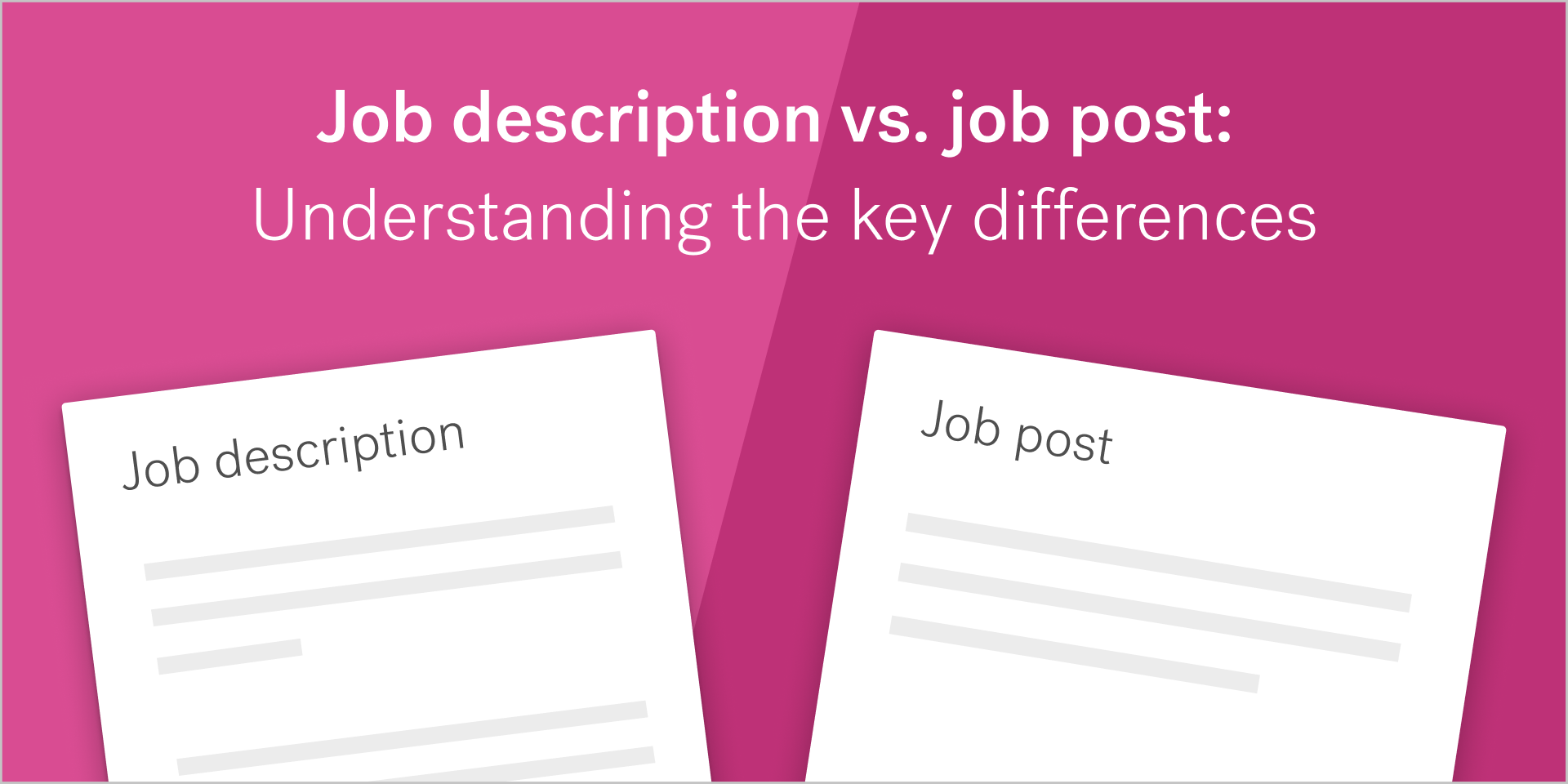Job description vs. job post: Understanding the key differences

Is a job description the same thing as a job post? Not quite. Though they share many characteristics, they’re intended for distinct purposes and places. Knowing the differences between the two, and when to use each, can help you get more leverage out of your recruiting content. And considering that half of job seekers make the decision to apply to a role based on the contents of the job post, it’s worth getting both right.
Talent teams vary in how they define a job description vs. job post, because the terms are so often used interchangeably. As Word Nerds in the talent space, we’re especially interested in the nuances of these terms at Textio. So we chatted with our own talent team to get their take.
Here’s the breakdown.
What’s the difference between job posts and job descriptions?
A key difference between these two documents is whether they’re created for internal or external purposes. That dictates what content should be included, and also the format and even tone. In general, job descriptions are usually internal and job posts are usually external.
Job descriptions
A job description (or “JD” as it’s often called) is the most robust version of these documents. It goes through all of the role responsibilities, expectations, duties, tasks, and more. Since it’s an internal document, it can also include important context about the role. For example, is it a new role or a backfill? What is the justification and business impact of the role?
Job descriptions are particularly helpful in aligning the team around the role scope and ideal candidate skillset. That’s why organizations often kick off new requisitions with a full job description. And, since they’re so thorough and thought out, job descriptions can be an excellent source of structured interviewing questions for the hiring team.
Job posts
A job post is the public-facing document that summarizes the role for posting to a company’s career page, and also to job boards. When written effectively, job posts (or job postings) are shorter and more concise than job descriptions. While the job post is informed by the job description, it includes only the most important aspects and focuses on the things candidates care most about. They should stick to the content that will attract talent.
The whole goal of job posts is to attract applicants, so every word counts. It’s also really important to be clear about which qualifications are required and which ones are nice-to-haves. When job posts are an overly long wishlist and don’t stick to prioritized requirements, it narrows your talent pool because underrepresented candidates are more likely to self-select out.
A good job post effectively positions the company, culture, values, and role in the most appealing way with the goal of attracting a strong pipeline of qualified candidates.
Job advertisements
There’s a third form a job-related document can take: the job advertisement (or job ad). A job ad is the most pared down version of the pieces. Think of this as a sales pitch for the role. Typically, the job ad is posted on social media or shared in other places as a short and compelling blurb that is intended to drive traffic to the job post. As such, it’s frequently accompanied by a link to the company’s job post or careers site.
Just as a marketing team would advertise a product, recruiters and talent leaders advertise open roles on their teams. You can tell the difference between a job ad and a job post by the length of the document. A job ad is typically just a short blurb or highlight of the role.
However, it’s important to note that in the UK a job advertisement—or job advert—is what most others consider a job post. It can definitely get confusing. But, the word “advert” is usually a tip-off.
The language you use in all of these documents is important. Starting with a solid structure in the job description helps your team write a more engaging job post. And, staying mindful of the language in your job post will help focus your content, excite candidates, and broaden your talent pipeline.
Learn how Textio for recruiting supports recruiting teams with data-driven inclusion guidance.